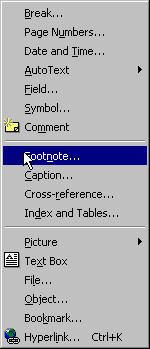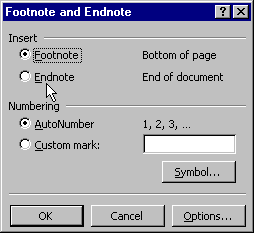
The first thing you should do is to save this lesson as a Bookmark. Then you can always go back to it easily.
- passages copied verbatim from the work of another must be enclosed in quotation marks. A full reference to the original source must be provided. The substitution of a few words in an otherwise verbatim passage will not obviate the need to use quotation marks and to provide a full reference
- you must always give due acknowledgement to the sources of ideas or data which are not yours and are not truly in the public domain (for example, because they are novel or controversial) or are not widely accepted or widely recognised
- ideas and data which are your own or are truly in the public domain may be included without attribution, but should be expressed in your own words
- you must take care to distinguish between your own ideas or work and those of others. Any ambiguity in such a distinction could give rise to a suspicion of Plagiarism
- where your work is the result of collaborative research,you must take care to acknowledge the source of data, analysis or procedures which are not your own.
Plagiarism then must be understood for what it is. It is the unattributed borrowing of other people's words. This can mean wholesale copying of paragraphs or even pages, and attempting to pass them off as your own. The definition also extends to unattributed sentences which you might (even in innocence) have copied from a book or article and inserted into an essay. If the sentence is not footnoted as a quotation, then you will be guilty of Plagiarism. If you base a paragraph or a particular argument in an essay on an author's work, you should also acknowledge this borrowing in a footnote, even if you do not borrow his or her sentences directly.
Today's exercise, therefore, is designed around your ability (or otherwise) to link quotations in an apparently logical way around some theme or other. The aim of the lesson is to get you to attribute all quotations routinely. The idea of the lesson is that you use Netscape to find historical quotations. Try and search for quotations that appear relevant to People and their History. After copying the quotation directly into your word document enclose it with quotation marks and then simply insert a footnote at the end of your quotation. In the footnote supply the correct source, with page numbers if possible. Remember that in Word 97 it is extremely easy to insert pictures, footnotes, page numbers and symbols using the pull down Insert menu, which should look something like this:

After selecting footnote, you should then get a box inviting you to choose its format, position etc. This box should look something like this:

Bartlett's Quotations On-Line
Search for quotations by author etc.
Quotations Home Page at Lexmark
A Guide for Writing Research Papers based on Modern Language Association(MLA: Statement on plagiarism